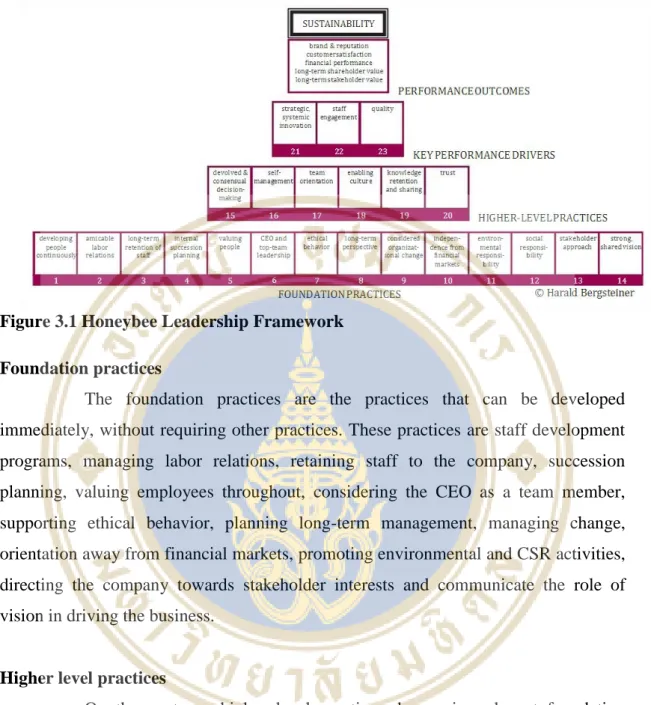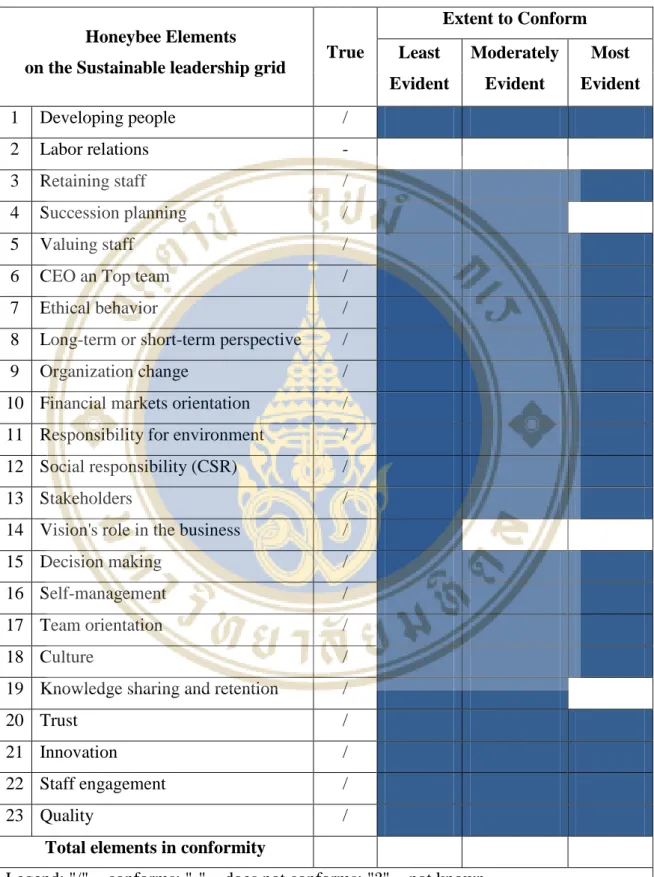Avery and Bergsteiner's framework is grouped into six categories for analysis: long-term perspective, workforce development, organizational culture, innovation, social responsibility, and ethical behavior. Due to corporate failures and scandals, consequences of prevailing business models that emphasize maximizing short-term and shareholder value, more attention is now being paid to other management models that maintain long-term business success. Following recent corporate bankruptcies and scandals, consequences of the prevailing British-American business model that emphasizes maximizing short-term and shareholder value, increasing attention is being paid to other management models that sustain long-term business success.
The goal is not to maximize short-term profits, but to generate long-term value for all stakeholders. The long-term sustainability business model concerns companies' relationships with many interest groups, not just shareholders, emphasizing the continued satisfaction of shareholders, maintaining the growth of their economic, social and environmental capital base, and the performance of Company. The Honeybee framework focuses on more aspects of the organization than the traditional framework, including long-term perspective, human resources, culture, innovation, social and environmental responsibility and ethical behavior.
Beekeeping companies focus on the short-term aspect in the long term, namely in the aspects of strategic thinking, planning and investment, growth of work processes, human policies and shareholder relations (Avery, 2005). Long-term focused leaders are entrusted with the well-being of the company for generations to come. From a long-term business perspective, the company avoids sudden changes or major development of strategies in order to minimize the effects on sustainability.
It is clear that ongoing staff development is an important part of the long-term perspective of retaining and promoting staff.

Unlike Honeybee companies, traditional shareholders do not focus on corporate social responsibility (CSR) or environmental protection, as there must be expenses and investments that can affect short-term financial benefits. CEO and top team – CEO joins and participates as a team member or speaker, not a sole decision maker. Long or short-term perspective – Focus and worry more about future success than short-term gains, for example investing in long-term goals for sustainability, improving employees or process in organization, investing more in R&D.
Financial market orientation – Manage and manage the business independently without having to worry about external pressures, for example investors, banks, ventures or shareholders, because these short-term pressures can affect the sustainability of the business. Involvement of employees is accepted by managers or top management team to get more ideas, information and knowledge from others in decision making. Employees have the right to work freely, to make decisions, to manage their own time in certain areas.
Team Orientation – Encourage employees to work in extended teams, cross-functional, not limited to decision-making or manager-centered teams. Culture – Foster an enabling, broadly shared culture that does not focus on short-term outcomes that may or may not be shared. Share and retain knowledge – Knowledge is distributed throughout the organization and can be easily retrieved, shared and managed.
Trust – The Honeybee approach requires the company to have high trust through the relationships and goodwill of all employees. Consider ideas from all employees at all levels to develop innovative products, processes or services. This element is to identify whether the employees are emotionally satisfied and connected with the company or not.
If employees are financially committed to the company, the company will always have to provide financial rewards as motivation. A company must acquire the quality of culture, core values and beliefs that guide employees to understand and act in accordance with desired behaviors, not a matter of control.
Summary of the findings of the case studies in Thailand
Instead, the top and middle managers reduced their salaries to save money for the hospital, showing a very strong teamwork culture, trust and respect for lower level employees. Most Honeybee organizations are supported by a no layoff policy, strict workplace onboarding practices, low turnover rates, and promotion from within. As mentioned in the long-term perspective, innovation is a large part of sustainability management.
To support the company, findings from previous studies show that most of them invest in innovation to continuously create more value for their products, services, processes and new business models, including soliciting creativity and ideas from individual employees. Some companies also offer programs that allow employees to emphasize their thinking, idea generation, problem solving and decision making. Honey bee companies in case studies have invested in many key innovations within their field, expanding stakeholder benefits, improving service quality, managing knowledge and creating long-term uncertainties.
It is a long-term development to gain benefits by leading the world to a better place. For example, Theptharin Hospital deploys SCR across the healthcare sector, and associates with the Thai Ministry of Public Health. From case studies, all companies delivered the message to the employees to observe ethical standards.
Policies, core values, trainings and programs are developed for employees on ethical behavior to address all stakeholders. As sustainable leadership has gained support in Thailand as an approach to ensure corporate sustainability and no study has been conducted on Thailand's security industry, the presented study uses Honeybee Leadership as a framework to explore a company's business practices in the proposed industry to determine whether they are consistent with Honeybee management.
METHODOLOGY
Basic practices are practices that can be developed immediately, without requiring other practices. These practices are staff development programs, managing labor relations, retaining staff in the company, succession planning, evaluating employees across the board, considering the CEO as a team member, supporting ethical behavior, management planning long-term, change management, orientation away from financial markets. , promoting environmental and CSR activities, directing the company towards the interests of stakeholders and communicating the role of vision in driving the business. Rather, higher-level practices require corresponding foundational practices to be developed before they can emerge.
Higher-level practices consist of decentralized decision-making, employee self-management, team orientation, organizational culture, knowledge and trust management. Different combinations of core and higher-level practices will support the company's key performance. These factors will strengthen the company's performance by providing what customers are looking for.

Open ended interview Questions derived from the framework
Interviewees
FINDING
Findings from the 23 elements
It is easy to see that most of the employees have been working with Phol Dhanya for many years. Another finding from the observation that Phol Dhanya offers staff retention is that Phol Dhanya is the best workplace in the areas (Lumlukka). Under Phol Dhanya's leadership, decisions are made collaboratively across teams, including the CEO and top team.
And in 2013, the Phol Dhanya Institute of Directors of Thailand received the "Board of the Year" award. Many clearly point to Phol Dhanya's focus on long-term management, employee retention and development, a corporate mission that relates to long-term relationships with stakeholders. Phol Dhanya doesn't put much pressure on short-term goals, but annual goals are essential.
There are some foreign investors and stakeholders related to Phol Dhanya, but only a small fraction. Phol Dhanya also filters water from the canal (using his product and technology) and provides it to the locals in the area. In addition, Phol Dhanya conducts seminars to provide knowledge and information about the security environment to the public.
For CSR activities, Phol Dhanya invests in a team that specifically offers free safety courses to factories, manufacturers, industrialists and the public. Phol Dhanya focuses on stakeholders or “everyone in our value chain,” as Khun Boonchai said. One way to retain knowledge is through employee retention, as discussed in the previous element, where Phol Dhanya is performing well.
Phol Dhanya is also investing in Knowledge Management System where all knowledge, insights, experience and solutions can be shared with all employees and are centralized for management. As discussed in the relevant elements, Culture, Self-Management, CEO and Core Team and Decision Making, Phol Dhanya employees are built on trust, not only with employees but also with stakeholders. From the interview and observations, employees said that Phol Dhanya has good relations with all stakeholders, no major conflicts are known with any party.
As a security company, Phol Dhanya offers high-quality products and high-end brands to ensure quality and customer satisfaction. Board of the Year and Corporate Governance awards are also given to Phol Dhanya for the last 3 years, ensuring the quality.
RECOMMENDATION
By talking about the least clear element, Vision's role in business, Phol Dhanya is not really using their vision to strive for success. Even though the vision was clearly communicated to the employees, the vision was not seen as a business driver. They only know what the vision is, towards which the future Phol Dhanya is directed.
For Honeybee to become a leader, I would suggest that Phol Dhanya develop and embed a vision in each employee as a common goal, dream and passion that all employees must work together to achieve. Lead employees to work as a whole to achieve one common goal as a team, as a company. For ethical behavior, investing in a preventive system is a promising method to ensure zero corruption, a system that can manage the sales team in terms of document processing and bidding activities to avoid unethical behavior.
CONCLUSION

